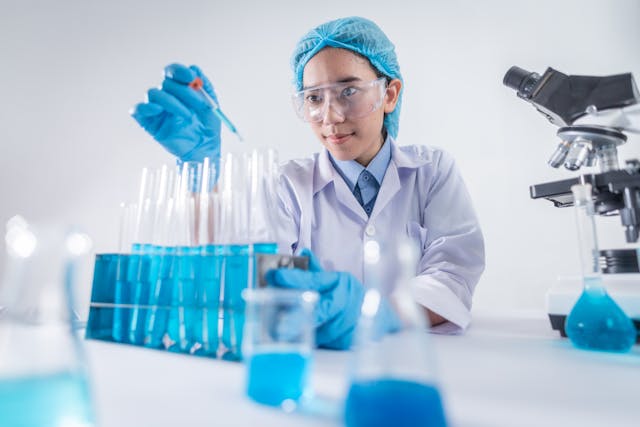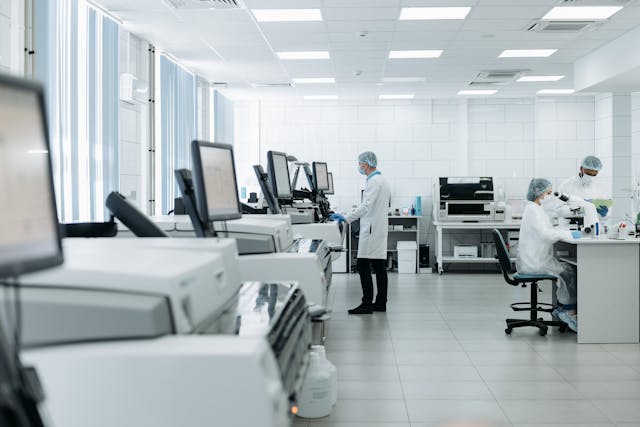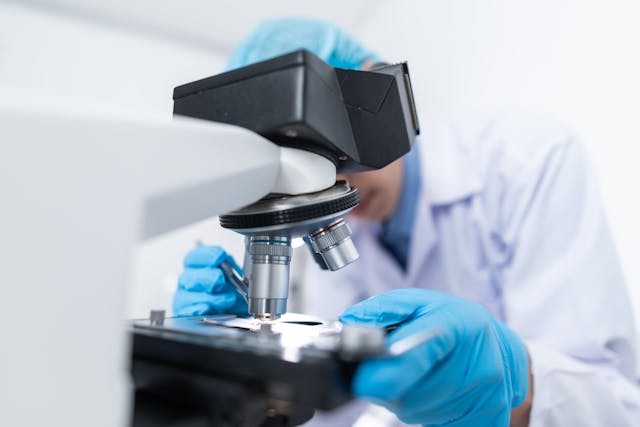- Biotechnology holds vast potential but requires stringent safety measures to mitigate risks.
- Laboratory protocols, including BSLs and GLPs, ensure safe handling of hazardous materials.
- Stringent quality control measures, like analytical techniques and process validation, ensure product safety.
- Robust regulatory oversight, encompassing GMPs and environmental regulations, upholds safety standards.
- Embracing innovative technologies and vigilance towards emerging risks are crucial for safety.
Biotechnology’s promise of revolutionizing medicine, agriculture, and industry holds tremendous potential for humanity. Yet, alongside its myriad benefits, ensuring safety within biotechnological processes is paramount. As you delve into the intricate realm of biotechnology, understanding the essential processes that guarantee safety becomes imperative. From meticulous laboratory protocols to stringent regulatory frameworks, many measures are in place to safeguard both human health and the environment.
1. Strict Laboratory Protocols

Laboratories are the epicenters of biotechnological innovation, where groundbreaking discoveries are made, and novel solutions are crafted. However, this environment teems with potential hazards, ranging from chemical spills to microbial contamination. To mitigate these risks, stringent laboratory protocols are enforced.
Implementation of Biosafety Levels (BSLs)
Within laboratories, the concept of biosafety levels (BSLs) categorizes the degree of containment required when handling hazardous biological agents. From BSL-1 (minimal risk) to BSL-4 (highest level of containment), these levels dictate the appropriate safeguards and protective measures.
Adherence to Good Laboratory Practices (GLPs)
Good Laboratory Practices (GLPs) are a cornerstone for ensuring the reliability and integrity of data generated in laboratory studies. By prescribing meticulous guidelines for experimental conduct, documentation, and quality assurance, GLPs minimize the potential for errors and ensure the reproducibility of results.
2. Stringent Quality Control Measures
In biotechnology, stringent quality control measures are indispensable for upholding product safety and efficacy. Whether it’s pharmaceuticals, genetically modified organisms (GMOs), or biofuels, every facet of production undergoes rigorous scrutiny.
Utilization of Analytical Techniques
Advanced analytical techniques, such as polymerase chain reaction (PCR), high-performance liquid chromatography (HPLC), and mass spectrometry, enable precise characterization and quantification of biomolecules. By leveraging these tools, biotechnologists can accurately ascertain their products’ purity, identity, and potency.
Implementation of Process Validation
Process validation serves as a pivotal step in ensuring the consistency and reliability of biotechnological processes. By systematically evaluating each stage of production and verifying its efficacy, biotechnologists can preemptively identify and rectify potential deviations, thereby safeguarding product quality.
3. Robust Regulatory Oversight
The burgeoning landscape of biotechnology necessitates robust regulatory oversight to uphold safety standards and protect public welfare. Regulatory bodies are pivotal in scrutinizing biotechnological processes, from initial research and development to commercialization.
Compliance with Good Manufacturing Practices (GMPs)
Good Manufacturing Practices (GMPs) delineate the requisite standards for biotechnological product manufacturing, packaging, and distribution. By adhering to these stringent guidelines, manufacturers ensure the consistency, purity, and safety of their offerings, thereby bolstering consumer confidence.
Adherence to Environmental Regulations
Biotechnological endeavors often intersect with environmental concerns, necessitating compliance with stringent regulations to mitigate potential ecological risks. Adherence to environmental regulations is paramount, whether it’s the release of genetically modified organisms (GMOs) into the environment or the disposal of hazardous waste.
4. Embrace of Innovative Technologies
Innovation lies at the heart of biotechnology, driving progress and fostering transformative change. Embracing cutting-edge technologies not only enhances efficiency and efficacy but also augments safety across diverse domains.
Integration of Automation and Robotics
Automation and robotics have revolutionized biotechnological processes, streamlining workflows and minimizing human error. By delegating repetitive tasks to robotic systems, laboratories can mitigate the risk of accidents and ensure precision in experimental procedures.
Adoption of Novel Purification Techniques
Purification lies at the crux of biotechnological production, facilitating the isolation and refinement of target biomolecules. Emerging purification techniques, such as chromatography and reverse osmosis, offer unprecedented efficiency and purity, thereby enhancing product safety and efficacy.
5. Vigilance Towards Emerging Risks
In the dynamic landscape of biotechnology, vigilance towards emerging risks is paramount for preemptive mitigation. From unforeseen side effects of genetic modifications to the emergence of novel pathogens, proactive surveillance, and risk assessment are essential.
Continuous Monitoring and Surveillance

Continuous monitoring and surveillance enable biotechnologists to promptly detect and address potential risks before they escalate into crises. Whether it’s monitoring microbial contamination in bioreactors or tracking the spread of genetically modified organisms in ecosystems, real-time surveillance systems play a pivotal role in safeguarding safety.
Implementation of Crisis Management Protocols
Despite meticulous precautions, crises may still arise within biotechnological endeavors. In such exigencies, implementing crisis management protocols is crucial for orchestrating an effective response and mitigating adverse consequences. By fostering resilience and preparedness, these protocols ensure swift containment and resolution of crises.
Biotechnology is a beacon of hope, promising to revolutionize myriad facets of human existence. Yet, this transformative potential must be tempered with an unwavering commitment to safety. By adhering to strict laboratory protocols, implementing robust quality control measures, embracing innovative technologies, and remaining vigilant towards emerging risks; we can navigate the intricate landscape of biotechnology while safeguarding both human health and environmental integrity. Through collective diligence and foresight, we can harness the boundless potential of biotechnology to forge a safer, healthier, and more sustainable future for generations to come.




